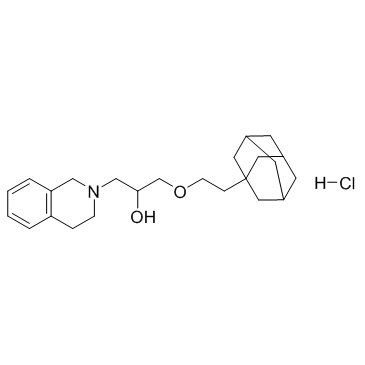| Description |
ADDA 5 hydrochloride is a partial non-competitive inhibitor of cytochrome c oxidase (CcO), with IC50s of 18.93 μM and 31.82 μM for purified CcO from human glioma and bovine heart, respectively.
|
| Related Catalog |
|
| Target |
IC50: 18.93 μM (CcO, human glioma), 31.82 μM (CcO, bovine heart)[1]
|
| In Vitro |
ADDA 5 hydrochloride is a partial non-competitive inhibitor of CcO, with IC50s of 18.93 μM and 31.82 μM for purified CcO from human glioma and bovine heart, respectively. ADDA 5 inhibits CcO activity in UTMZ and Jx22-derived GSCs, with IC50s of 21.4 ± 3.9 μM and 15.5 ± 2.8 μM. ADDA 5 (25 μM) shows a growth inhibitory effect on UTMZ cells, with an EC50 of 8.17 μM[1].
|
| In Vivo |
ADDA 5 (8 mg/kg, i.p.) significantly suppresses the growth of tumor in mice. ADDA 5 does not causes detectable toxicity at up to 80 mg/kg in mice[1].
|
| Animal Admin |
UTMZ cells are transplanted into mice at 6 weeks of age, and after 12 days the mice are treated intraperitoneally with ADDA 5 (8 mg/kg) or DMSO-saline as a control. Tumor volume is measured once each week, starting at day 28 when tumors become visible. At 43 days, animals reach the end point and are killed, and the final tumor volume of both groups is determined[1].
|
| References |
[1]. Oliva CR, et al. Identification of Small Molecule Inhibitors of Human Cytochrome c Oxidase That Target Chemoresistant Glioma Cells. J Biol Chem. 2016 Nov 11;291(46):24188-24199. Epub 2016 Sep 27.
|
